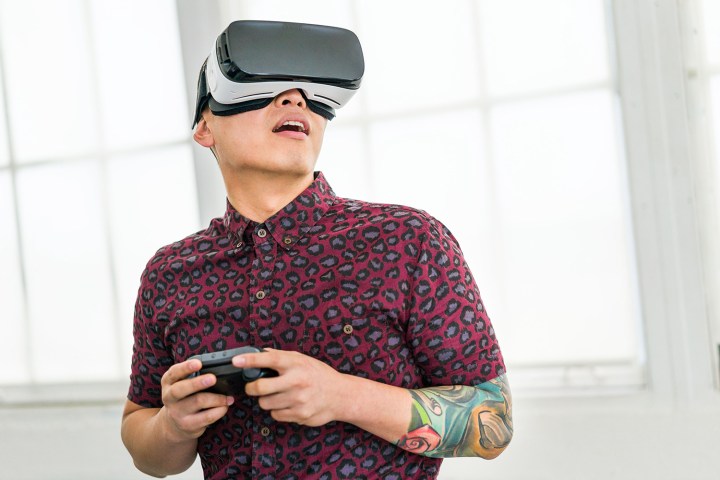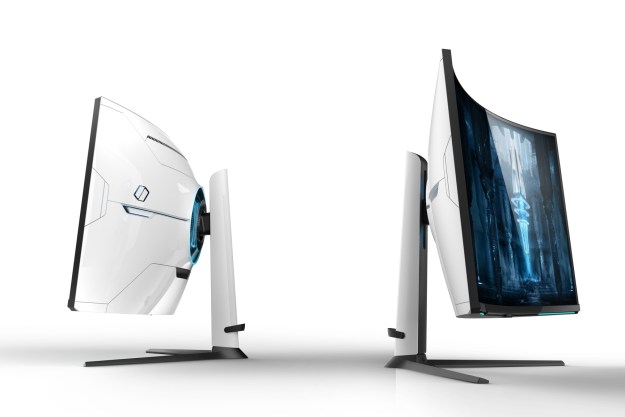
The company introduced a display with a similar density during the Society for Information Display 2017 convention held in Los Angeles in May. The liquid crystal display (LCD) measures 1.96 inches and is designed for virtual reality, augmented reality, and holograms. It has a resolution of 3,840 x 2,160 and a massive pixel density of 2,250 pixels per inch.
Samsung also revealed a glass-free 5.09-inch OLED display targeting virtual reality, 3D games, and 3D pop-up books. Joining this product was a stretchable OLED screen measuring 9.1 inches that could be “dented” up to 0.47 inches like a balloon, and then reverted back to its original shape. Samsung is reportedly working on an ultra-high-resolution OLED with a pixel density of 800 ppi as well.
It has a resolution of 3,840 x 2,160 and a massive pixel density of 2,250 pixels per inch.
Samsung’s head of research and development for software and services, Injong Rhee, confirmed that the company was working on a stand-alone mobile VR headset during its 2016 develop conference. He didn’t say when the headset would hit the market, but indicated that it would eventually support hand and gesture tracking.
Samsung may be putting its stand-alone virtual reality headset under the Odyssey brand to distinguish it from the smartphone-dependent Gear VR. Although Samsung sells an ATIV Odyssey smartphone through U.S. Cellular, the company uses the brand on a 15.6-inch notebook starting at $1,200. Sporting a 15.6-inch FHD screen, this gaming-friendly notebook is based on Intel’s Core i7-7700HQ processor and Nvidia GeForce GTX 1050 discrete graphics chip.
Google revealed its plans for a similar stand alone VR unit in May that will be built by Lenovo and HTC. Based on Google’s Daydream platform and a reference design co-developed with Qualcomm, it will enable users to engulf themselves in virtual reality experiences supporting full freedom of movement. The headsets will track objects and people in the physical world so users aren’t bumping into furniture, walls, or family members.
Samsung’s Gear VR headset is currently built to support a specific batch of Galaxy-branded smartphones, such as the most recent Galaxy S8. It’s backed by technology supplied by Facebook-owned Oculus VR, the makers of the Oculus Rift VR headset for PC. And while Gear VR doesn’t support the full-body movement experience seen on the HTC Vive and Oculus Rift, Samsung just recently introduced the Gear VR Controller for tracking hand motions.
Google Daydream powered stand-alone VR headsets built by HTC and Lenovo are slated to arrive in late 2017. We expect Samsung is shooting for the same window with its Odyssey-branded device. Will it support Daydream and rely on Google’s reference design? Guess we’ll find out over the next six months.
Editors' Recommendations
- Should you wait for the 2023 Samsung Odyssey Neo G9, or buy last year’s model?
- Samsung’s Odyssey OLED 49 arrives cheaper than expected
- Samsung Odyssey OLED 49 vs. Odyssey Neo G9 (2023)
- Why the Samsung Ark won’t catch on like the Odyssey G9 did
- I tried out the incredible Samsung Odyssey Ark monitor, and it has one big problem


